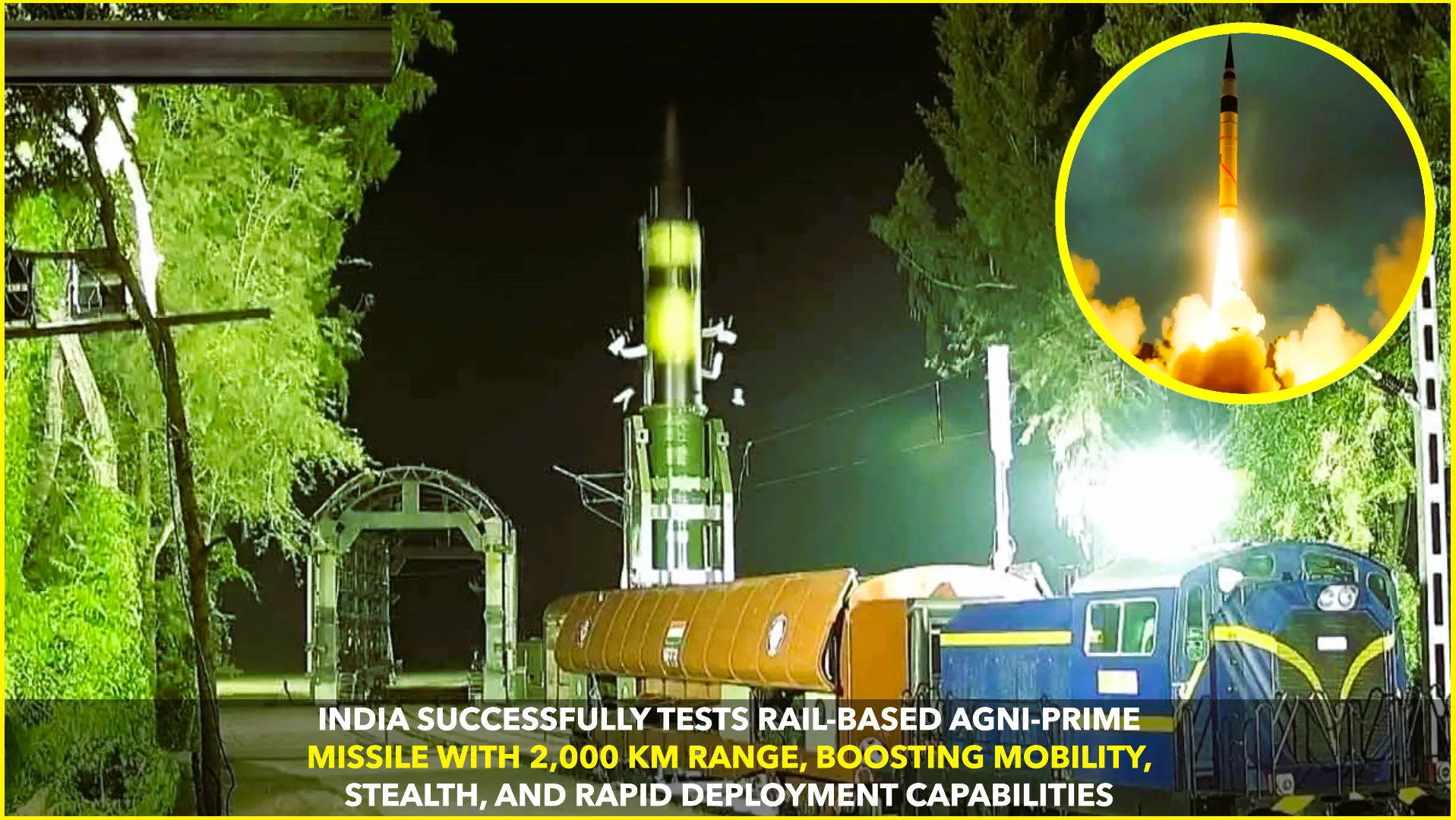India has achieved another milestone in its defense modernization journey by successfully launching the Agni-Prime missile from a rail-based platform. This marks the country’s first-ever test of a ballistic missile system deployed on a train, opening a new chapter in India’s strategic capabilities.
The test, conducted under the supervision of the Defence Research and Development Organisation (DRDO) and the Strategic Forces Command (SFC), showcased the advanced design of the Agni-Prime, a nuclear-capable ballistic missile with a strike range of up to 2,000 kilometers. Unlike earlier road-mobile variants, the rail-based system provides enhanced flexibility, stealth, and rapid deployment across the country’s vast railway network.
A Mobile and Stealthy Advantage
The Agni-Prime, also referred to as Agni-P, is part of India’s growing family of indigenous ballistic missiles. Designed as a medium-range missile, it fills the gap between the Agni-I and Agni-II systems, offering precision targeting and improved survivability.
What makes this launch historic is the rail-based deployment capability. Trains carrying the missile can blend into the regular railway network, making detection by adversaries extremely difficult. Once the system reaches its designated location, the missile can be erected and launched with minimal preparation time.
Military analysts highlight that such mobility drastically enhances India’s second-strike capability, a key pillar of its nuclear doctrine. In the event of a surprise attack, rail-based systems ensure survivability and the ability to respond decisively.
Technical Features of Agni-Prime
According to DRDO officials, Agni-Prime carries multiple improvements over its predecessors:
- Range: Capable of striking targets between 1,000 and 2,000 kilometers.
- Propulsion: Two-stage solid-fuel system, providing high accuracy and reliability.
- Guidance: Advanced navigation and guidance systems for precise targeting.
- Weight Reduction: Lightweight composite materials make it easier to transport and deploy.
The missile is also equipped with canister-based launch capability, reducing maintenance needs and allowing storage for longer durations.
India’s Expanding Strategic Arsenal
The rail-based Agni-Prime test adds to India’s already robust missile program. Alongside land and sea-based missile systems such as the Agni-IV, Agni-V, and the submarine-launched K-series missiles, the Agni-P now enhances survivability through rail mobility.
Experts believe this development strengthens India’s position in the evolving strategic balance of South Asia. With both China and Pakistan expanding their missile forces, India’s move ensures credible deterrence and greater operational flexibility.
Retired Air Marshal Anil Chopra, a defense analyst, noted: “Rail-based missile systems provide stealth and unpredictability. For a country with a vast rail network like India, this capability is a major boost to survivability and quick response options.”
Strategic Implications
The successful test demonstrates India’s continued commitment to building a credible minimum deterrent while maintaining its no-first-use nuclear policy. By diversifying launch platforms, India reduces the risk of its assets being neutralized in a first strike.
Additionally, the rail-based system offers a cost-effective alternative to road-based and silo-based deployments. Unlike fixed silos, which are vulnerable to satellite surveillance and precision strikes, mobile systems keep adversaries guessing.
International Reactions
While official statements from neighboring countries are awaited, defense watchers expect that this development will be closely monitored in Beijing and Islamabad. Both countries have invested in rail and road-based systems, but India’s success marks its entry into this strategic club.
Western defense journals have already praised the test, calling it “a significant leap” in India’s missile deployment strategy. The test also underlines India’s growing self-reliance in defense technology, aligning with the government’s “Atmanirbhar Bharat” initiative.
The Road Ahead
This rail-based test is only the beginning. Sources within DRDO suggest that further trials are planned to validate the system’s operational readiness under varying terrain and weather conditions. The integration of such systems into the Strategic Forces Command will likely take place after a series of user trials.
If deployed widely, rail-based Agni-Prime units could be stationed across India’s heartland, ready to move undetected and launch if needed. This would ensure a powerful, credible, and survivable deterrent force for the nation.
Source:
Information compiled from official DRDO statements, Ministry of Defence updates, and reports from The Hindu, Times of India, and Janes Defence Weekly.










